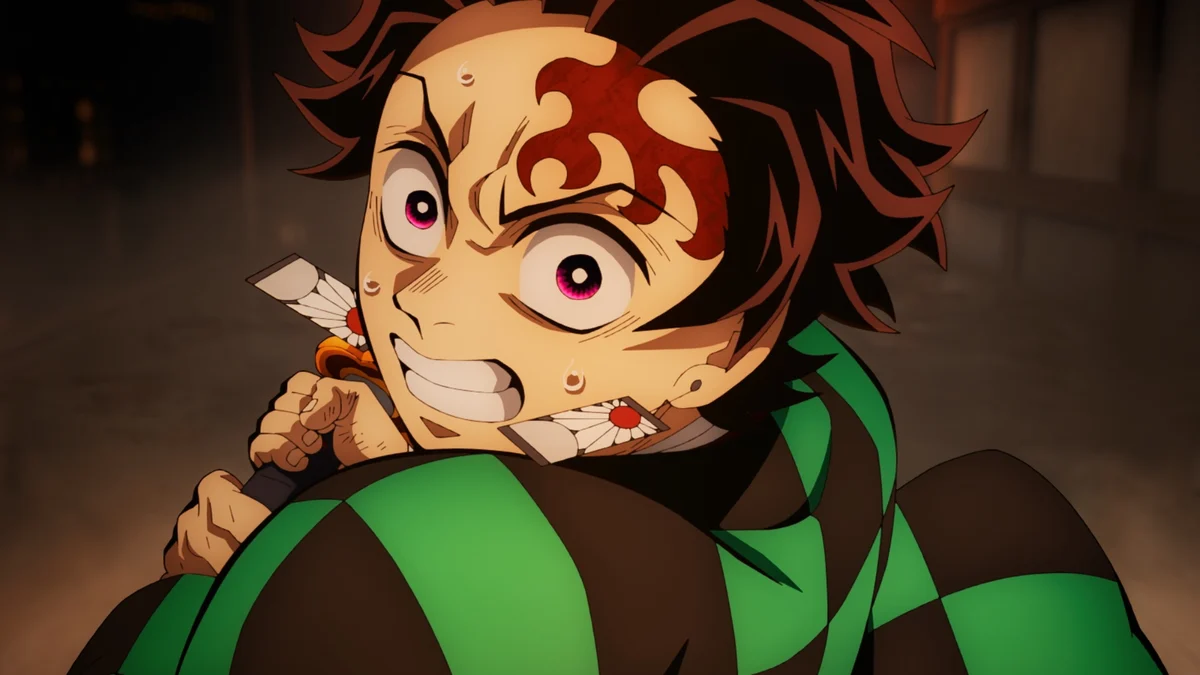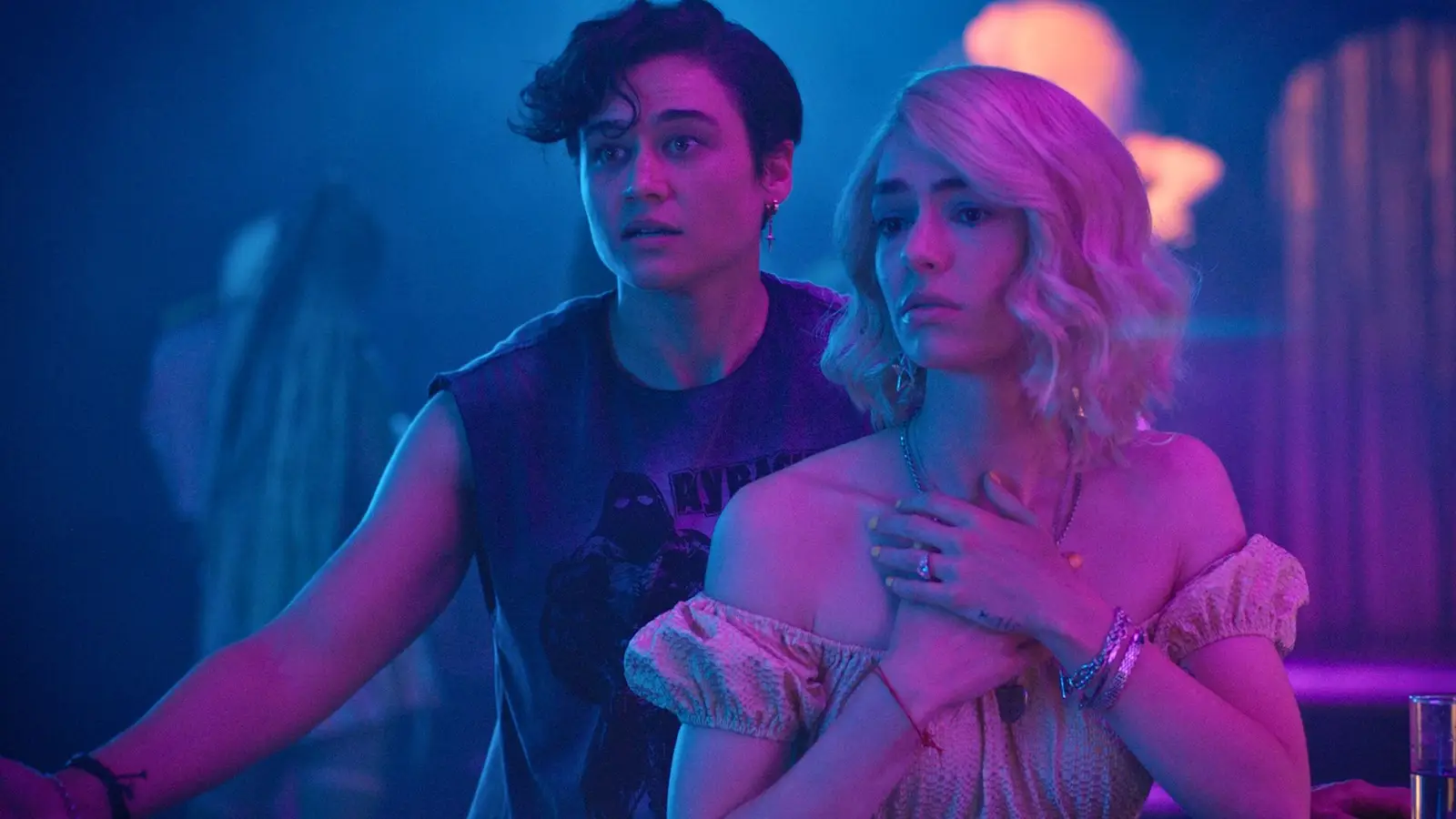Copyright standard

A young man who has a chainsaw for a head - and a chainsaw for each arm too - is riding a Great White shark through downtown Tokyo while being attacked by a scantily-clad young girl with a bomb for a head. Her name is Reze, and she’s a Bomb Devil, capable of destroying buildings with one flick of her finger, or indeed turning her entire leg into a missile. The young man is called Benji and he works as a Demon Hunter for the Public Safety Agency, now transformed into Chainsaw Man in order to stop her... but it’s not easy, especially since he really quite fancies her. Nope, we had no idea what was going on either... But welcome to Chainsaw Man The Movie: Reze Arc! This is the new the new anime film to hit IMAX screens this week, and the buzz is that it will be another ‘surprise’ hit for the company behind it all, Crunchyroll; and their parent company Sony, who acquired Crunchyroll in 2022. Now while you may not have heard of Crunchyroll, you may well have noted the success this year of Demon Slayer: Infinity Castle, which is currently the fifth highest-grossing film globally of 2025 ($648 million) and has become both the highest-grossing Japanese film of all time and the highest-grossing anime film. In the US/Canada it has become the top grossing international film ever in the domestic marketplace ($128.6m). These are Marvel numbers and are all the more remarkable since anime films are usually (well, true fans at least) watched with subtitles. The success of Infinity Castle has topped even that of the previous Demon Slayer film Mugen Train in 2020, the breakthrough hit that showed a Covid-hit Hollywood film industry that they might want to rethink a few things. You know how all media, and particularly film studios, are now endlessly talking about IP? Yes Intellectual Property is being held up as the key to untold fortunes. You don’t want to just chuck all your efforts into standalone films, you want to create content with franchise potential that can work over multiple activations (films, TV, merch, games, toys, festivals) or develop existing high-recognition brands into entertainment behemoths (Lego, Barbie). Or, yknow, blatantly do your own version and throw in some K-pop for good measure in the targeted marketing masterpiece that was KPop Demon Hunters. Crunchyroll have spearheaded a lot of this while remaining unique because their IP model is a streamlined direct-to-consumer one, which has tapped into the youth market with staggering success. The anime industry as a whole was worth $34 billion in 2024, with projections saying it will rise to $60 billion by 2030. Sony bought Crunchyroll for around $1.2 billion in 2020 and Variety have said it is expected to generate 40 per cent of Sony Pictures operating profit within the next two years. Mitchel Berger, Head of Theatrical & SVP at Crunchyroll is a man who has seen a remarkable change in the anime business over the last 11 years. He started in the film industry at Universal, but then joined Sony’s Funimation, a proto-Crunchyroll which has now been folded into the younger company since the acquisition. Berger was a Star Wars fan originally not a manga fan, but he saw a commonality in the level of fan obsession. “I had an appreciation of what it was like to be a fan, I knew what it was like to be obsessively interested in a world and characters,” he says, “Really at the core of what we do is the fan, and giving them what they love.” In the early days, Funimation was primarily about home entertainment, with DVDs of anime developed from manga big-hitters like Dragon Ball Z and One Piece. In those innocent pre-streaming days, it was a niche concern outside of Japan. “Anime was very underground, very counter-culture when I started,” he says, “I don’t know if it’s exactly mainstream now, but if you talk to Gen-Z or Gen-Alpha, it’s part of their cultural experience.” As with Marvel, Crunchyroll has found success by turning comic books into a studio system. But the model of Crunchyroll is such that it is ‘always on’... Crunchyroll is basically a subscription platform where you can pay a fee each month and watch hundreds of anime serials and movies, and also read the manga from which they derived (involving some cross over with the another manga subscription service, Shonen Jump). There are always new episodes and new series to try. The leading stories like Demon Slayer have avid viewers and readers in the millions. Crunchyroll will then provide ways to give fans more of what they love. “We are acquiring content in Japan and localising it into 10-15 different languages, whether it's subtitled or dubbed, and we're bringing it out to a global audience,” he says, “The starting point for most people with Crunchyroll is as a streaming company, that's where the fandom is created with someone where they find a piece of IP that they love. But we don't stop there. Once you become a fan, you want to surround yourself with everything else. You want to see it in the theatre, you want to buy the collectible item or the t-shirt, you want to go to a convention and meet up with other folks. You want to play the video game. You want to read the manga that it's based on. So we try to be wherever you're at with an authentically Crunchyroll experience.” What’s happened over the last few years is that these movies are now appearing on more big screens - the biggest screens - and finding a much broader audience as they do so; with new fans then being fed back to the Crunchyroll app, other mangas, and on it goes. Now under the ownership of the mighty Sony with all its resources to lean on, you can expect these big movie moments to become even bigger. A potentially niche title like Chainsaw Man will suddenly be in front of eyes such as your correspondent’s. And while being dropped cold into the film is somewhat bewildering, a world of Gun Devils and Angel Devils along with multiple characters who have long histories in previous arc, it is also obvious what the appeal is: multi-layered Easter Eggs for fans, but also dazzling action sequences where the characters get down to the fighting to death metal. It’s a highly stimulating experience, which on IMAX feels particularly undeniably addictive. Mitchel says there were theatrical releases back when he started, “some Dragon Ball films were very successful, but they were speciality releases, limited runs for 3 or 5 days,” whereas now there has been a breakthrough in wider releases, even blockbusters. “Coming out of the pandemic, a really big moment for us was the release of Demon Slayer: Mugen Train. That was really a seminal moment where we showed that anime fans really do want to come out to a theatre in large numbers. The theatrical experience is really important. You cannot replicate it in the home. And from a Crunchyroll perspective, it's also not in conflict with streaming. A lot of people want to create this dichotomy of it's either streaming or theatrical and they're somehow fighting with each other, when they're not. They're fundamentally different experiences that both serve a purpose for a fan. You can watch it at home by yourself but sitting in a theatre with 200 people who love Demon Slayer the same way you do? That is a singular experience.” Such thinking is at the core of the company’s success. Treating cinema and streaming as two complementary entities that co-exist, for ultimately they are serving the precious IP. But what of the individual IPs, these stories that so many are watching? Aren’t they a bit, well, extreme? In the case of Chainsaw Man, this is a story aimed squarely at adolescent males. The character is a hapless, horny teen, obsessed with the girls in the film, who are never more than a gust of wind from being semi-naked. They are not submissive, far from it, but you feel prurience is all part of the recipe for keeping a bulk of fans reading. That said, there are manga and anime aimed at different genders, the girls do very much get a look in and there are age restrictions for certain series. Notably, the jewel in the crown, Demon Slayer, does not rely on suggestions of sex and is instead one of the most emotional, sensitive story you could ever imagine, to do with family, loyalty and dealing with trauma. It centres around the lovely boy Tanjiro, whose family is slaughtered by a demon; his little sister Nezuko survives but, as with vampires, she is slowly turning into a demon herself. The pair head off on a long journey as Tanjiro seeks to save his sister while training to become a demon slayer powerful enough to take vengeance. It is, quite simply, an excellent production. Crunchyroll has applied the streaming culture into an extremely attractive package for younger people, that teenage audience who want something a bit edgy and out there, a weird, cheeky humour and a love for the outrageous and obscene. While all this might seem worrying for some parents, this is just the teen world of angst and jokes and roiling emotions - and you can console yourselves with how much morality and lessons in kindness and friendship there are. For all the insanely exciting action, Demon Slayer leaves you weeping too. Mitchel says, “For anime in general, and specifically for Demon Slayer, one of the reasons it's worked so well is the emotion. It clearly has action, it's very exciting, it's visually stunning, there's a lot going on. But I think what really takes it to that next level is that emotional depth and resonance. The fans truly care about these characters. They’re emotionally invested. That’s why it works. They've been on this journey with them through four seasons and a couple of films - and the next two films are the culmination of that arc from the manga. What I feel is our responsibility is, setting aside all the business, what it's really about is facilitating a connection between a creator with a vision, who creates a character, and a fan that is going to make an emotional connection to that character. At the end of the day, if there's not that emotional tie there, if the characters don't feel like they have depth and agency, it's not gonna work.” And this is the point. That while it may seem like anime is providing a lot of noisy, hyper-violent excess, in fact they are providing depth and real investment. And the long game aspect of manga historically, the everlasting nature of them as arc follows arc over decades sometimes, means it is perfectly suited to a new age. “Streaming's become so ubiquitous and the access to anime is so much easier now and so immediate,” Berger says, “We put shows out on the platform an hour after they're on the TV in Japan, so you're part of this conversation in real time. That's really changed things. And as we talk to that younger generation, what we found is anime has just become part of how they express themselves, how they define themselves, how they relate to each other in the world, and it's really become foundational to how they consume media.” This new era of media consumption is of course one which we are all party to, not just younger generations. Already the film and TV industry is ever more weaving in reboots of old classics which appeals to parents and kids (Ghostbusters, Robin Hood, Star Wars, Doctor Who etc etc) and further develop these new habits as a bonding tool not simply an lone bedroom experience. But most excitingly for fans of young men with chainsaws for heads, there’s little doubt we are just at the start of a new Golden Age of Anime. Says Mitchel, “More Gen-Z and Gen-Alfa watch anime than NFL football in the United States. There's something there that is resonating with this younger crowd, and I think that's only gonna grow.” Chainsaw Man is in cinemas now



